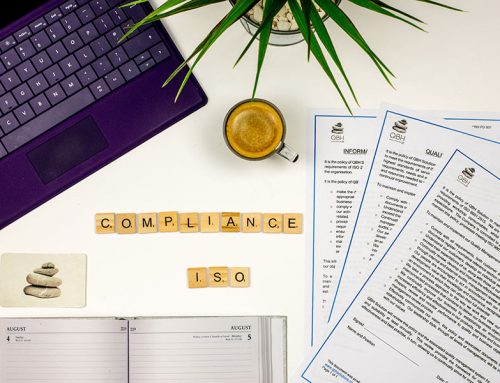The ISO 9001 Quality Assurance Standard (2008) was updated last year to a newer version of the standard – ISO 9001:2015. We are working with a lot of clients helping them to transition to the new version in time for their surveillance audit. You have until 2018 to transfer over but in the meantime we have listed below some of the key differences to help you prepare.
Leadership
Businesses need to identify & understand the internal & external issues impacting on what the organisation does and how it will achieve its goals for the Management System. To achieve this, the standard is looking for senior managers and directors to demonstrate their understanding of the bigger business environment (including social, cultural, regulatory & environmental impacts), the businesses strengths & weaknesses and how all these factors determine how the business can deliver its products or services. The standard is also looking for responsibilities to be allocated for key processes and a clear understanding, approach and management of process risks.
Risk Management
The standard requires an effective risk management process detailing and addressing what the risks are, who has responsibility for management, how the risks will be controlled and when the risks are likely to arise (what, who, how & when). Risk replaces the “preventive action” section of the previous standards. The standard considers risk within this context as “the effect of uncertainty on an expected result”
Measuring, Objectives & Change
The standard is making quality objectives more detailed, consistent with the businesses quality policy, measurable, monitored, communicated and updated. Quality objectives also have to be defined at the appropriate levels or functions of a business. Quality objectives will need to define a plan on how they will be achieved, results used to determine success in achieving them and who has ownership of the objectives.
Awareness & Communication
The new standard has further defined the requirement for a business to ensure that everyone knows the implications of non-conformity to the management system. This will be achieved through the development and introduction of a communication plan, which defines who is responsible for communication, that they are authorised, hold the relevant qualifications, competencies or knowledge.
Fewer Documented Requirements
The new standard removes the requirements for procedures but has a clause for Documented Information including general, creating and updating and control. It is up to the businesses to decide what information they wish to retain, how it is updated and controlled.
If you would like assistance in updating your management systems to the new version of ISO 9001 or for any ISO advice or support in Kent or the South East please get in touch
07795 564089
01303 891803
info@qbhsolutions.co.uk
Businesses have until September 2018 to transition to the new standard.




Leave A Comment